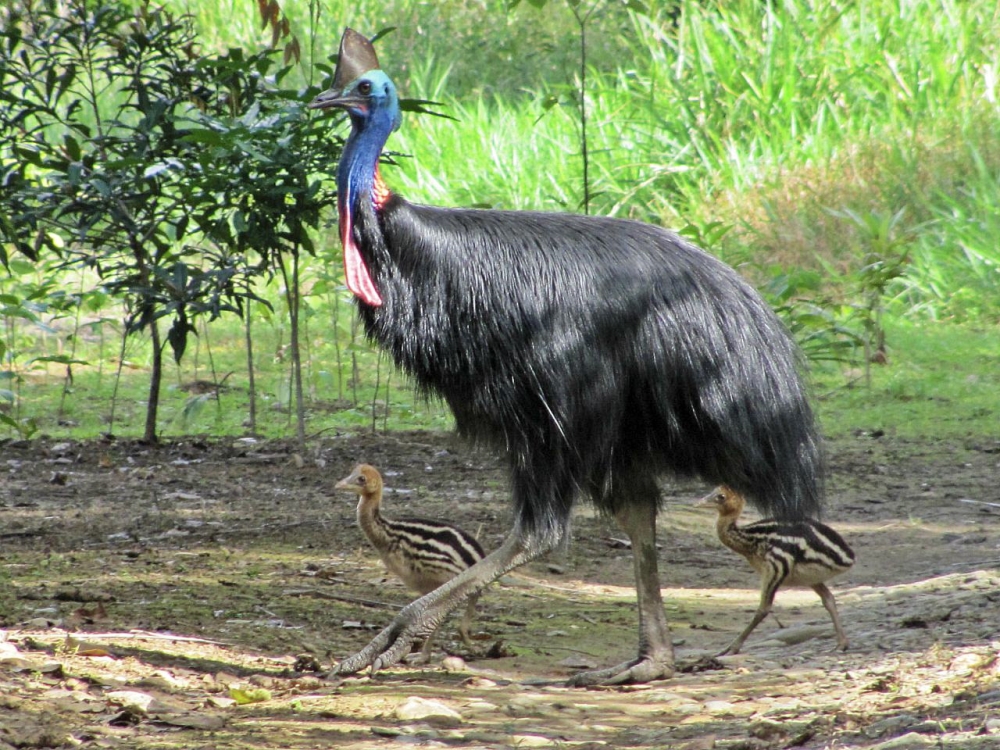Mission Beach Restoration Project
On the 2nd February 2011 Cyclone Yasi crossed the north Queensland coast at Mission Beach wreaking devastation on what little rainforest habitat remained.
Cassowaries were forced to leave their rainforest home in search of food, putting them in danger of being hit by cars and attacked by dogs. Sadly 19 cassowaries died within the first year of the Cyclone. With scientists estimating that only 40 adult birds remain in Mission Beach, the situation is becoming dire.
PLANT A RAINFOREST AT MISSION BEACH
Help restore vital habitat for the endangered Southern Cassowary that depend on local rainforest for survival. Just $20 will plant and maintain two rainforest trees.
Why is the Southern Cassowary on the brink of extinction?
Habitat loss and fragmentation are the key reasons. More than 80% of lowland tropical rainforest – the habitat of the cassowary – is gone. The remaining habitat is highly fragmented, isolating populations, disrupting movement and bringing cassowaries into contact with roads.
There have been 67 recorded cassowary deaths from collisions with vehicles in the Mission Beach area in the last 15 years. Clearing, road construction and fragmentation of rainforest for residential development continues.

How you can help rescue the Cassowary
Two things you can do right now.
1. Rainforest Rescue has developed a plan with the local community to restore critical Mission Beach cassowary corridors. The corridors will provide habitat, food, and a safe passage for generations of cassowaries to come.
For every $10 you donate we will plant and maintain one rainforest tree for two years. How many can we count you in for.. 20, 30 or 50? The more trees we can plant the more habitat there will be to ensure the future survival of the cassowary.
2. Few people know of this extinction emergency. Together we must let them know. Please forward this (link to as many people as you can. Urge them to help. We can’t let the cassowary slip quietly into extinction. With your help, they won’t!
Why the Southern Cassowary is interesting and important
Southern Cassowaries live only in Australia’s northern rainforests. Nationally it is estimated that as few as 4,000 are left in the wild. An imposing and impressive creature, this bird is brilliantly coloured, flightless and can grow up to two metres tall. The female can weigh up to 76 kg. In an interesting role reversal, the male raises the chicks while the female searches for mates.
They are an ancient rainforest species and a keystone of the rainforest ecosystem. By eating up to 238 different rainforest fruits, they disperse rainforest seeds over a large area in their droppings. This important role helps to keep the rainforest healthy and promotes rainforest regeneration. An estimated 70 to 100 rainforest plant species depend almost entirely on the cassowary to disperse their seeds and provide the fertiliser for their growth.
Why are the Mission Beach Cassowaries so Important?
They are important for the local rainforests, the traditional owners and local community, this area being part of the Cassowary Coast Regional Council.
With the largest area of lowland rainforest south of the Daintree River, Mission Beach is recognised as the site with the highest density of cassowaries in Australia. Their numbers are dwindling so it’s critical that we have enough support to preserve them.
Road deaths are a major reason for the rapid decline of the Mission Beach cassowary population, with unrecorded deaths from accident injuries and the orphaning of chicks adding to the toll. Restoring important rainforest corridors will reduce the cassowary road tolls and help improve their numbers.
Pile of reports
For over two decades there have been countless reports written in the name of cassowary management and protection, and yet their numbers have declined. The good news is we know what needs to be done… and we’re doing it.
Please Join Us.
Stay in the loop
Head over to Rainforest Rescue’s News page for the latest updates on our work preserving a vast biodiversity of plants and wildlife in our rainforests. Make sure you’re subscribed to our quarterly eNews to receive updates direct to your inbox!
purchase
and
protect
>>>
and
protect
>>>


